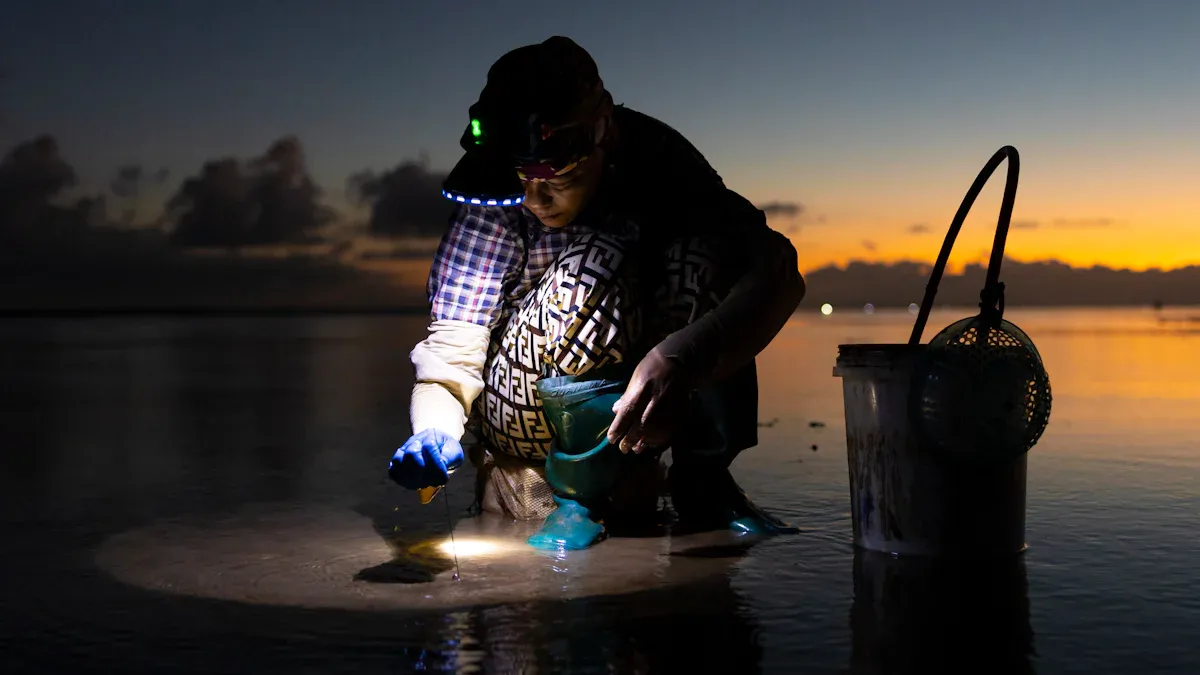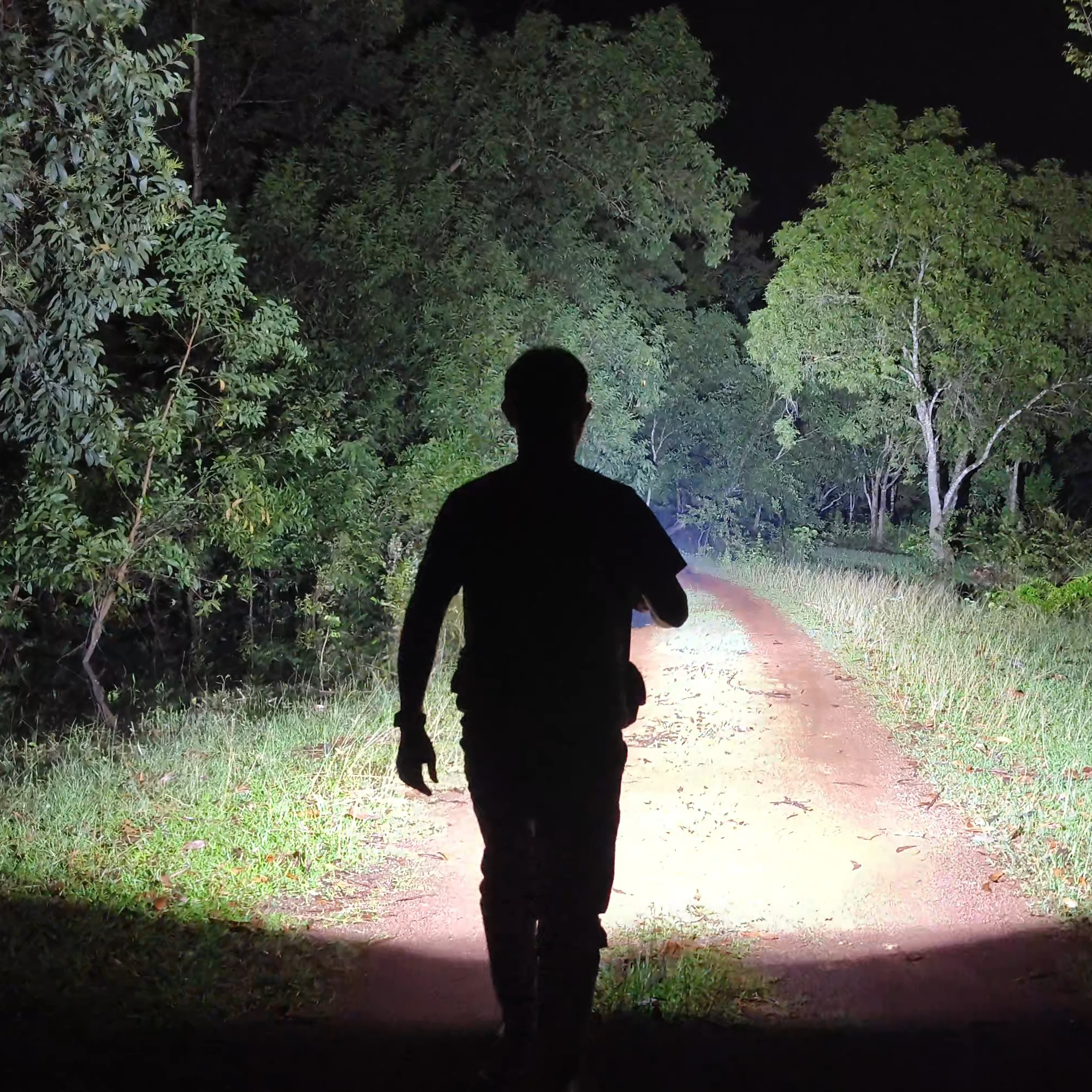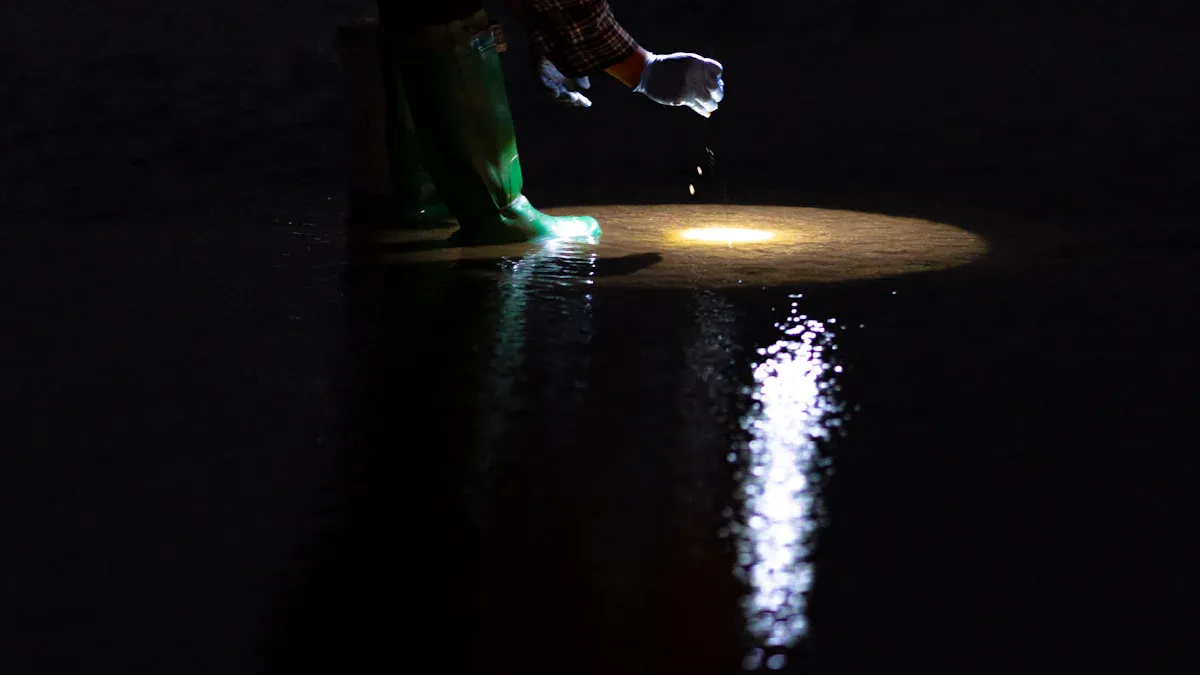How to Select the Right Flashlight for Night Fishing and Boating

Choosing the right flashlight for night fishing and boating is essential for a safe and successful experience. A reliable flashlight improves visibility, helping you avoid obstacles and navigate unfamiliar waters. It also enhances safety by identifying potential dangers, such as submerged objects or intruders. Additionally, the best flashlights provide green light, which effectively attracts fish at night, boosting your chances of a great catch.
Key Takeaways
Pick a flashlight with brightness you can adjust. For basic use, 150-300 lumens is enough. For deep water, choose one with over 400 lumens.
Get water-resistant flashlights with an IPX7 or better rating. This helps them last in wet places and work well in emergencies.
Think about hands-free lights like headlamps. They let you do more, making night tasks easier and safer while freeing your hands.
Key Features of a Flashlight for Night Fishing

Brightness and Beam Distance
When fishing at night, the brightness and beam distance of your flashlight play a crucial role. A flashlight with adjustable brightness settings allows you to adapt to different tasks. For example:
Use a headlamp with at least 150 lumens for tying lures or setting up rods.
Opt for a flashlight with 400 lumens or more for general area lighting.
For deeper waters, consider high-lumen models like the Imalent LD70 (4,000 lumens) or MS03 (13,000 lumens).
A beam distance that penetrates far into the water ensures better visibility, especially in murky conditions. This feature helps you spot fish and navigate safely.
Light Modes for Night Fishing
Different light modes enhance your nighttime fishing experience. White and green lights are particularly effective for attracting fish, as green light penetrates deeper and minimizes suspended particles. Amber LED lights reduce eye strain and improve visibility in foggy conditions. Additionally, forward-facing LED lights help with navigation, while floodlights illuminate larger areas. A fishing head torch with multiple modes ensures versatility for various tasks.
Water Resistance and Durability
A water-resistant model is essential for fishing at night. Flashlights with IPX7 or IPX8 ratings can withstand immersion in water, making them ideal for boating or fishing. For example, an IPX7-rated flashlight remains functional after being submerged up to 1 meter for 30 minutes. Durable materials like anodized aluminum prevent corrosion, ensuring your flashlight performs well in harsh weather or underwater conditions.
Battery Life and Power Options
Reliable battery life is critical for nighttime fishing. Rechargeable lithium-ion batteries are convenient and eco-friendly, while disposable options like AA or CR123A batteries offer flexibility. For emergencies, renewable options like solar-powered or hand-crank flashlights provide backup power. Choose a flashlight with sufficient battery capacity to last through your fishing trip.
Choosing the Right Flashlight for Night Fishing Tasks
General Lighting Needs
When fishing at night, your flashlight must meet basic lighting requirements to ensure a smooth experience. A flashlight with a brightness range of 100-300 lumens is ideal for most scenarios. White light provides excellent visibility but may scare fish, while yellow light offers a softer glow that is less intrusive. You should also consider the type of beam. Spotlights are perfect for long-distance visibility, while diffuse beams work better for close-up tasks like tying knots.
For convenience, lightweight flashlights or a fishing head torch are excellent options. A head torch keeps your hands free, allowing you to focus on your fishing tasks. Additionally, water resistance is crucial for durability in wet conditions. Look for flashlights with waterproof ratings to ensure they withstand splashes or accidental submersion.
Attracting Fish with the Right Light
The right fishing light can significantly improve your catch rate. Green LED lights, with a wavelength of approximately 520 nm, are the most effective for attracting fish. They penetrate deeper into the water and minimize the visibility of suspended particles, making them ideal for murky conditions. Green light attracts plankton, which in turn draws baitfish and game fish.
You can use floating or submersible fishing lights to target fish at different water levels. Combining these lights enhances their effectiveness, creating an irresistible environment for fish. A fishing head torch with a green light mode can also be a versatile tool for this purpose.
Safety and Emergency Lighting
Safety should always be a priority during nighttime fishing. A flashlight with multiple brightness levels ensures you can adapt to different situations. For emergencies, rechargeable flashlights with red light modes are invaluable. Red light preserves your night vision and helps you stay alert to your surroundings.
Consider flashlights with additional features like magnetic bases for hands-free use or a fishing head torch for convenience. These tools not only improve visibility but also help you identify potential dangers, such as obstacles in the water or approaching strangers.
Practicality and Maintenance

Hands-Free Options for Convenience
Using hands-free flashlights enhances your experience when fishing at night. A fishing head torch is one of the most practical options, as it allows you to keep your hands free while providing bright, focused light. This makes tasks like tying knots or handling equipment much easier. Additionally, a flashlight with a magnetic base can be attached to metal surfaces, offering hands-free lighting for tasks that require precision.
For nighttime fishing, red light modes are particularly useful. They preserve your night vision and minimize disturbances to wildlife. This feature is especially helpful when you need to adjust your gear without scaring away fish. The table below highlights some popular hands-free flashlight designs:
Feature Type | Description |
|---|---|
Rechargeable | Flashlights that can be recharged for convenience |
With Red Light | Red light option to preserve night vision |
With Magnet | Magnetic feature for hands-free use |
Cleaning and Battery Care
Proper maintenance ensures your flashlight performs well during nighttime fishing. Start by cleaning the exterior with a dry or slightly damp cloth. Avoid harsh chemicals that could damage the finish or seals. Use a soft, lint-free cloth to clean the lens, and if necessary, apply a lens cleaning solution designed for optical surfaces.
Inspect the O-rings regularly for wear or damage, as they maintain the flashlight’s waterproof capabilities. Rinse your flashlight with fresh water after use in saltwater or dirty environments to prevent corrosion. Shake out excess water and let it air dry completely before storing.
Battery care is equally important. Always use the type of batteries recommended by the manufacturer. Replace old batteries regularly to avoid leakage and corrosion. If you won’t use your flashlight for an extended period, remove the batteries to preserve its lifespan.
Proper Storage for Longevity
Storing your flashlight correctly extends its lifespan and ensures it’s ready for your next fishing trip. Keep it in a cool, dry place away from direct sunlight and extreme temperatures. Prolonged exposure to heat or cold can damage internal components and reduce battery performance.
Consider using a protective case to shield your flashlight from physical damage and dust. If you’re storing a rechargeable flashlight for a long time, remove the lithium-ion batteries to prevent faster discharge caused by temperature fluctuations. Following these practices will keep your flashlight in top condition for all your nighttime fishing adventures.
Selecting the right flashlight for night fishing involves considering key features like brightness, water resistance, and battery life. A durable, waterproof flashlight ensures reliability in harsh weather, maintaining consistent performance even in rain or fog. This durability is crucial for outdoor activities, as it protects against accidental drops and tough conditions.
Prioritizing safety and convenience enhances your experience. A dependable flashlight provides visibility to avoid obstacles and reduces risks during emergencies. Hands-free options, like headlamps, allow multitasking, making nighttime tasks easier and safer. Investing in a task-specific flashlight ensures you are prepared for any situation, leading to a successful and enjoyable adventure.
FAQ
What flashlight brightness is best for night fishing?
Choose a flashlight with adjustable brightness. For general tasks, 150-300 lumens work well. For deeper waters, opt for high-lumen models exceeding 400 lumens.
How do I maintain my flashlight after fishing?
Rinse it with fresh water to remove salt or dirt. Dry it completely before storage. Inspect O-rings and replace damaged ones to maintain waterproofing.
Can I use any flashlight for boating?
No, select a water-resistant flashlight with an IPX7 or higher rating. It ensures durability in wet conditions and reliable performance during emergencies.
See Also
Selecting The Perfect Headlamp Flashlight For Your Needs
Experience Hands-Free Night Fishing Using A Headlamp
Essential Tips For Picking The Best Camping Flashlight
